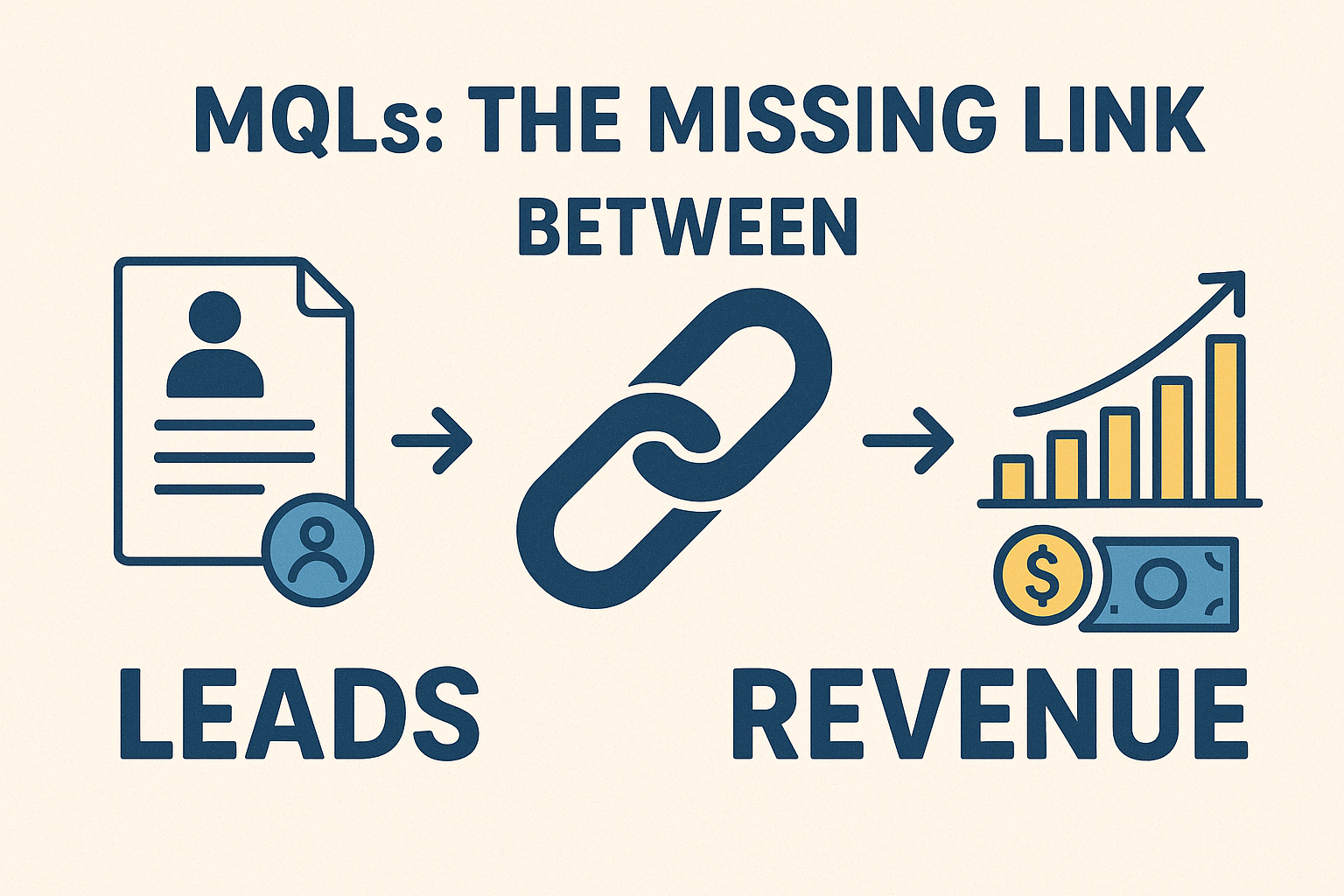Building and maintaining relationships with potential customers is crucial in B2B sales. This process, called lead nurturing, involves keeping in touch with prospects and providing them with helpful information until they are ready to make a purchase.
Lead nurturing is essential because it helps turn potential customers into loyal clients by earning their trust and demonstrating your business’s value. Lead nurturing is especially important in B2B sales because the buying process is often longer and more complex compared to consumer sales.
Businesses need to build strong connections with their prospects, ensuring they stay engaged and informed throughout their journey.
One way to improve lead nurturing is by integrating Customer Relationship Management (CRM) systems with marketing automation tools. A CRM system stores all customer data and interactions, giving you a complete view of each prospect’s journey.
When combined with marketing automation, you can send personalized messages and offers based on their behavior and preferences. This integration helps you stay organized, automate repetitive tasks, and keep leads engaged with relevant content, ultimately boosting your chances of converting them into customers.
Table of Contents
Toggle1# Understanding CRM and Marketing Automation
What is CRM (Customer Relationship Management)?
A Customer Relationship Management (CRM) system is a tool that helps businesses manage and analyze customer interactions and data throughout the customer lifecycle. Its primary goals are to improve customer relationships, assist in customer retention, and drive sales growth.
A CRM system collects information about customers from various channels, such as emails, phone calls, social media, and website visits, and stores it in one place. This centralized data helps businesses better understand their customers, track interactions, and ensure no opportunities are missed.
Benefits of a CRM System:
- Improved Customer Relationships: By having all customer information in one place, businesses can provide better and more personalized service.
- Increased Sales: CRM helps sales teams track leads and follow up effectively, leading to higher conversion rates.
- Enhanced Communication: Teams can collaborate more efficiently with a shared view of customer interactions.
- Data-Driven Decisions: Businesses can analyze customer data to identify trends and make informed decisions.
What is Marketing Automation?
Marketing automation tools are software platforms designed to automate marketing tasks and workflows. They help businesses target customers with automated messages across email, web, social media, and text. The goal is to streamline marketing efforts, increase efficiency, and provide a more personalized experience to potential customers.
Benefits of Marketing Automation:
- Efficiency: Automates repetitive tasks such as sending emails, posting on social media, and running ad campaigns.
- Personalization: Delivers tailored content and messages to customers based on their behavior and preferences.
- Better Lead Nurturing: Helps keep leads engaged by sending relevant information at the right time.
- Analytics and Reporting: Tracks the performance of marketing campaigns and provides insights for improvement.
Both CRM and marketing automation tools are essential for modern businesses. While a CRM system focuses on managing customer relationships and storing data, marketing automation tools are geared towards automating marketing efforts and nurturing leads. When used together, these tools can significantly enhance a business’s ability to engage with customers, streamline operations, and drive sales growth.
2# The Power of Integration
CRM and marketing automation tools work best when used together. While a CRM system helps businesses manage customer information and interactions, marketing automation tools handle the task of reaching out to customers with personalized messages.
How They Complement Each Other:
- Centralized Data: CRM collects and stores detailed customer information. Marketing automation uses this data to send relevant messages and offers to the right people at the right time.
- Streamlined Communication: By combining both tools, businesses can ensure that sales and marketing teams are on the same page, leading to consistent and effective communication with customers.
Benefits of Integrating CRM and Marketing Automation for Lead Nurturing:
- Personalized Messaging: Integration allows for highly targeted marketing campaigns based on detailed customer profiles from the CRM. This means potential customers receive information and offers that are most relevant to them, increasing the chances of conversion.
- Improved Efficiency: Automating marketing tasks saves time and resources. The sales team can focus on closing deals while the marketing automation tool keeps leads engaged and informed.
- Better Tracking and Reporting: Integration provides a complete view of customer interactions from initial contact to sale. This helps track the success of marketing campaigns and identify areas for improvement.
- Enhanced Customer Experience: By delivering timely and relevant information, businesses can build stronger relationships with leads, making them more likely to become loyal customers.
Integrating CRM and marketing automation tools creates a powerful system that helps businesses nurture leads more effectively, leading to increased sales and customer satisfaction.
3# Enhanced Lead Tracking and Management
Integrating CRM (Customer Relationship Management) systems with marketing automation tools significantly improves lead tracking and management. Here’s how it works and why it matters.
Improved Lead Tracking:
When a CRM and marketing automation tool are integrated, all customer interactions and data are stored in one place. This means that every email opened, link clicked, and form filled out is recorded in the CRM. This comprehensive view helps businesses track where leads are in the sales process and understand their interests and behaviors.
Better Lead Management:
Marketing automation tools collect valuable data about potential customers. This data is then fed into the CRM, providing sales teams with a complete profile of each lead. For instance:
- Behavioral Data: Knowing which web pages a lead visited or which emails they engaged with helps in understanding their interests.
- Demographic Data: Information like job title, company size, and industry helps in segmenting leads and tailoring communication.
Impact on Sales and Marketing Alignment:
When sales and marketing teams have access to the same data, they can work more effectively together. Here’s how integration benefits both teams:
- Consistent Communication: Sales teams can see the exact content and messages leads have received, ensuring their follow-ups are consistent and relevant.
- Prioritizing Leads: By using data from the marketing automation tool, the CRM can score leads based on their engagement level. Sales teams can then prioritize leads that are most likely to convert.
- Efficient Workflows: Automated workflows can route leads to the right salespeople based on predefined criteria, ensuring no lead falls through the cracks.
Impact on Business:
- Increased Conversion Rates: With detailed insights and timely follow-ups, sales teams can engage leads more effectively, increasing the chances of conversion.
- Improved Customer Experience: Personalized and relevant communication makes leads feel valued and understood, enhancing their overall experience.
- Better Decision Making: Access to detailed data helps both sales and marketing teams make informed decisions about strategies and tactics.
Integrating CRM with marketing automation tools enhances lead tracking and management, leading to better alignment between sales and marketing, more efficient processes, and improved business outcomes.
4# Improved Personalization and Targeting
Integrating CRM (Customer Relationship Management) systems with marketing automation tools can significantly enhance personalization and targeting in marketing campaigns. Here’s a straightforward explanation of how this works and why it matters.
Better Segmentation and Targeting:
When CRM and marketing automation tools work together, they collect and organize a lot of information about leads and customers. This combined data allows businesses to segment their audience into specific groups based on various criteria, such as:
- Demographics: Age, gender, location, job title, industry, etc.
- Behavior: Website visits, email opens, clicks, past purchases, etc.
Segmentation allows you to create highly targeted marketing campaigns tailored to each group’s specific needs and interests, making your marketing efforts more effective and relevant.
Personalized Communication:
Personalized communication means reaching out to potential customers with messages that are specifically relevant to them. Integrated systems make this easier by providing detailed insights into each lead’s preferences and behaviors. For example:
- Email Campaigns: Instead of sending the same email to everyone, you can send personalized messages that address each lead’s unique interests. For example, if a lead has shown interest in a particular product, you can send them information and offers related to that product.
- Targeted Content: You can create content that speaks directly to different segments of your audience. For example, a blog post or video tailored to the specific challenges faced by small business owners versus those faced by large enterprises.
Examples of Personalized Marketing Campaigns:
- Email Series: A lead downloads a whitepaper from your website. The CRM tracks this action, and the marketing automation tool triggers a series of follow-up emails providing more information related to the whitepaper topic, tips, and a demo offer.
- Retargeting Ads: A potential customer visits a product page on your website but doesn’t make a purchase. The CRM records this visit, and marketing automation sets up retargeting ads that the customer sees on other websites, reminding them of the product they are interested in.
- Birthday Offers: The CRM stores customers’ birthdays, and the marketing automation tool sends personalized birthday emails with special discounts or offers, making customers feel appreciated and valued.
Impact on Lead Nurturing:
Personalized communication helps in building stronger relationships with leads. When leads receive relevant and timely information, they are more likely to engage with your brand and move further down the sales funnel. It makes them feel understood and valued, increasing the likelihood of converting them into customers.
Integrating CRM and marketing automation tools enhances personalization and targeting, allowing businesses to create more effective and engaging marketing campaigns. By leveraging detailed customer data, businesses can deliver personalized messages that resonate with their audience, leading to better lead nurturing and higher conversion rates.
Automated and Efficient Communication
Integrating CRM (Customer Relationship Management) systems with marketing automation tools streamlines communication processes, making it easier to nurture leads effectively. Here’s how this integration helps automate communication and why it’s essential for lead nurturing.
Automated Email Sequences and Follow-ups:
With integration, you can set up automated email sequences triggered by specific actions or events, such as:
- Welcome Emails: Automatically send a welcome email when a lead subscribes to your newsletter or signs up for a webinar.
- Follow-up Emails: Automatically follow up with leads who have shown interest in your products or services but haven’t made a purchase yet.
- Re-Engagement Emails: Automatically re-engage with inactive leads to keep them interested in your offerings.
Efficiency Gains from Automation:
Automating repetitive tasks, like sending emails, saves time and resources. Instead of manually crafting and sending individual emails, you can create email templates and set up rules for when they should be sent. This frees up your team to focus on more strategic tasks, such as nurturing relationships with leads and closing deals.
Importance of Timely and Consistent Communication:
Timely and consistent communication is crucial for keeping leads engaged throughout the buyer’s journey. By automating communication processes, you ensure that leads receive relevant information at the right time, increasing their chances of conversion. Consistent follow-ups also help build trust and credibility with leads, leading to stronger relationships and higher conversion rates.
5# Enhanced Analytics and Reporting
Integrating CRM (Customer Relationship Management) systems with marketing automation tools offers valuable insights through enhanced analytics and reporting capabilities. Here’s how this integration provides comprehensive analytics and empowers better decision-making for lead nurturing.
Comprehensive Analytics: Integrated systems gather data from various touchpoints across the customer journey, providing a comprehensive view of lead interactions. This includes data on email opens, website visits, content downloads, and more. By analyzing this data, businesses gain insights into lead behavior, preferences, and engagement levels, helping them understand what resonates with their audience.
Benefits of Unified Data: Having unified data from integrated systems allows businesses to make more informed decisions. With all lead data centralized in one platform, teams can easily track and measure campaign performance, identify trends, and pinpoint areas for improvement. Unified data also enables better segmentation and targeting, as businesses can create more personalized experiences based on individual lead preferences and behaviors.
Detailed Reports for Refining Strategies: Integrated systems generate detailed reports that provide actionable insights for refining lead nurturing strategies. These reports offer metrics such as conversion rates, engagement levels, and ROI (Return on Investment) for each marketing campaign. By analyzing these reports, businesses can identify what’s working well and what needs adjustment, allowing them to optimize their lead nurturing efforts for better results.
Best Practices for Integration
Successfully integrating CRM (Customer Relationship Management) and marketing automation tools is crucial for effective lead nurturing. Here are some practical tips to ensure a smooth integration process:
-
Define Clear Objectives:
Before integration, clearly define your objectives and goals. Determine what you want to achieve through integration, such as improved lead tracking, enhanced communication, or better analytics. Having clear objectives will guide the integration process and ensure alignment with your business goals.
-
Choose Compatible Systems:
Select CRM and marketing automation tools that are compatible with each other. Ensure they have built-in integration capabilities or support third-party integrations. Choosing compatible systems simplifies the integration process and reduces the risk of compatibility issues later on.
-
Involve Stakeholders:
Involve key stakeholders from both sales and marketing teams in the integration process. Collaborate to identify requirements, discuss workflows, and align priorities. Involving stakeholders ensures that the integrated systems meet the needs of all departments and promotes cross-functional collaboration.
-
Address Data Quality:
Before integration, clean and standardize your data to ensure accuracy and consistency. Address any duplicates, incomplete records, or outdated information in your CRM system. Clean data improves the effectiveness of integration and ensures that insights derived from integrated systems are reliable.
-
Provide Training and Support:
Offer comprehensive training and support to users who will be working with the integrated systems. Provide hands-on training sessions, user guides, and resources to help users understand how to navigate the integrated platforms. Ongoing support is essential for adoption and utilization of integrated systems.
-
Monitor Performance and Adapt:
Regularly monitor the performance of integrated systems and track key metrics such as lead conversion rates, engagement levels, and ROI. Analyze the data to identify areas for improvement and adapt your strategies accordingly. Continuous monitoring and optimization ensure that integrated systems remain effective over time.
By following these best practices, businesses can successfully integrate CRM and marketing automation tools to enhance lead nurturing capabilities and drive business growth. Addressing common challenges and maintaining the integrated systems ensures a seamless and efficient lead nurturing process.
Conclusion
Integrating CRM and marketing automation tools is vital for successful lead nurturing in today’s business landscape. By combining these systems, businesses can streamline processes, improve communication, and ultimately boost sales.
Exploring integration options is key for those seeking to enhance their lead nurturing efforts. Whether you’re a small business or a large enterprise, finding the right combination of CRM and marketing automation tools can significantly improve your ability to nurture leads and drive revenue.
Don’t hesitate to delve into integration possibilities and discover how combining CRM and marketing automation can revolutionize your lead nurturing strategies. With the right integration approach, you’ll be well-equipped to cultivate meaningful relationships with prospects and propel your business forward.
Discover how lead nurturing can benefit your business. Contact us now to learn more!
FAQs
1. How does integrating CRM and marketing automation help with lead nurturing?
Traditionally, lead nurturing involved manual processes like sending generic emails and tracking interactions on spreadsheets. Integrating CRM and marketing automation streamlines this:
- Automated Workflows: Marketing automation sends targeted emails based on data in the CRM, like a lead’s interests or website behavior. This personalization fosters engagement and keeps your brand top-of-mind.
- Lead Scoring: CRM data helps assign scores to leads based on their actions and engagement level. Marketing automation then prioritizes leads for nurturing efforts, focusing on the most promising prospects.
- Seamless Journey: Leads seamlessly transition between marketing and sales stages. Interaction data from marketing campaigns flows into the CRM, allowing sales teams to tailor their outreach based on the lead’s nurturing history.
2. What are some benefits of integrated lead nurturing?
There are several advantages to using an integrated approach:
- Increased Lead Conversion Rates: Targeted nurturing with relevant content cultivates stronger leads, ultimately converting them into customers at a higher rate.
- Improved Sales Efficiency: Sales teams receive qualified leads with valuable nurturing history, allowing them to focus on closing deals instead of lead qualification.
- Enhanced Customer Experience: Personalized communication throughout the lead lifecycle fosters trust and builds stronger relationships with your brand.
3. What are some things to consider when integrating CRM and marketing automation?
A successful integration requires some planning:
- Data Quality: Ensure clean and consistent data across both platforms for accurate lead scoring and personalized nurturing campaigns.
- Alignment & Communication: Sales and marketing teams need clear communication channels to collaborate effectively and ensure a smooth lead handoff.
- Ongoing Optimization: Regularly analyze lead nurturing performance and adjust campaigns based on results to maximize their effectiveness.






